Learn how to grow potatoes easily! This prolific crop can come from just a few potatoes you already have sprouting in your pantry.
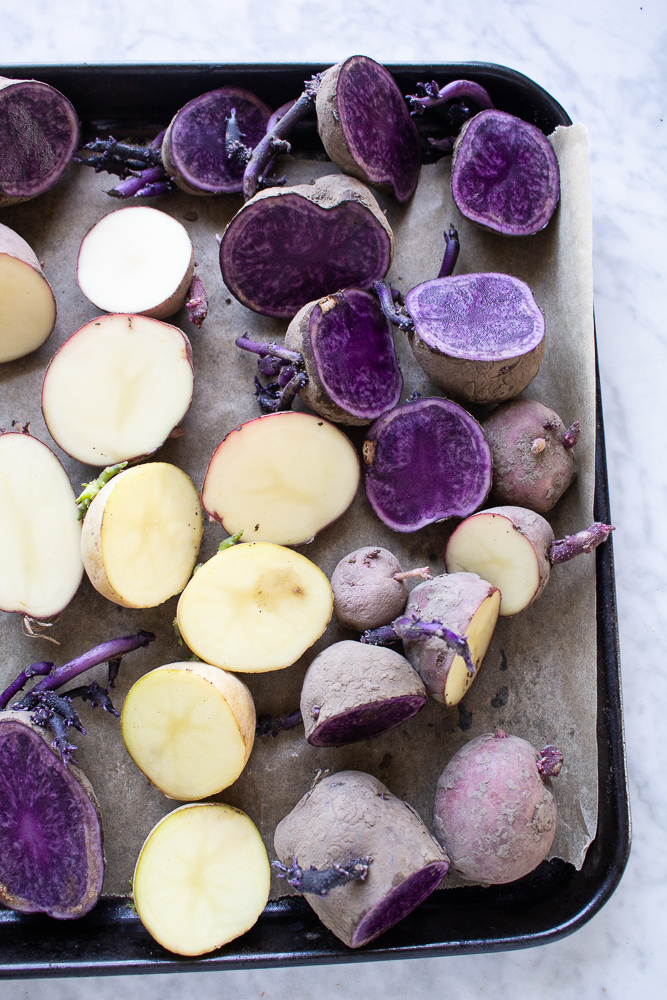
Learn how to grow potatoes easily! Growing potatoes is a fun activity that the whole family would love, especially the harvesting part where you get your hands dirty and find every little round nugget. I remember for years, I’d ask our son to come out in the garden and help me dig them out, and we all loved doing that together. We were all amazed that one little knob of potato could grow multiple handfuls.
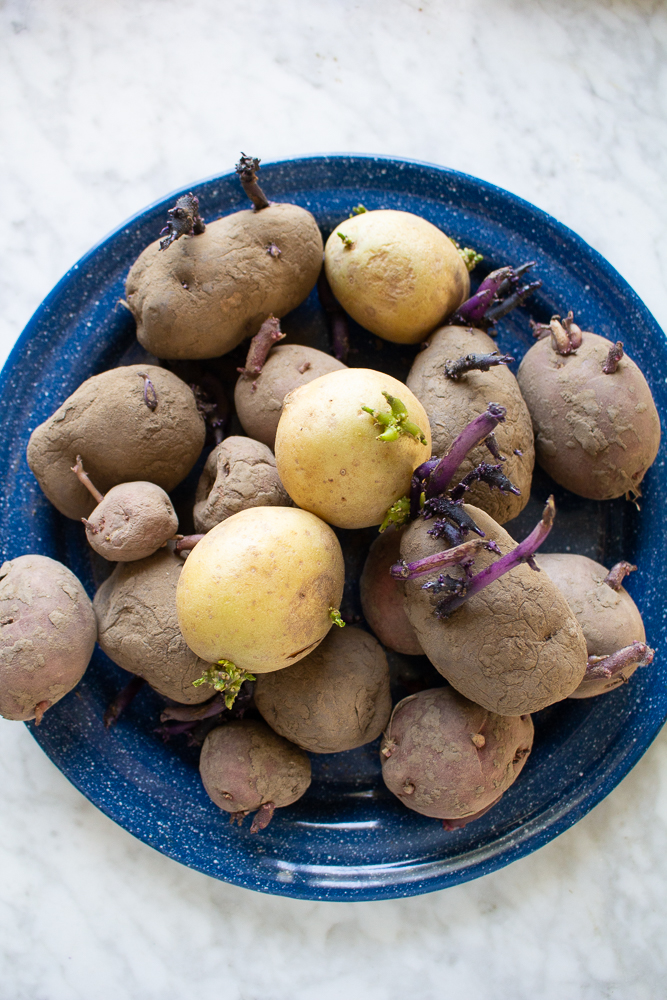
What To Know About Potatoes
It is important to get them organic whenever possible, as they are a crop that’s known for a lot of pesticides. I simply buy a bag of organic potatoes that we intend to eat, and leave a handful out “sacrificially” to become our garden potato seeds. Very often, I don’t get to them quickly enough and they bolt anyway.
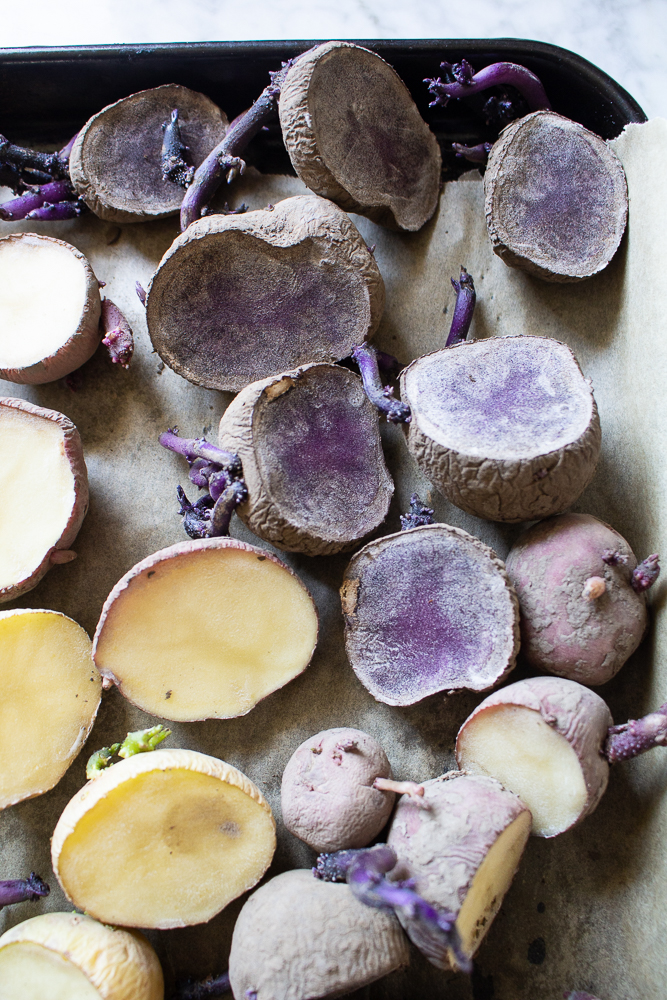
How To Grow Potatoes: Get creative with the colors!
Here we have golden, red, and purple varieties.
Golden potatoes: These have thin skin and are considered all purpose. We especially love them mashed.
Purple Potatoes: Their color is due to extra nutrients, notably anthocyanins. The more colors, the healthier they are! These are considered all purpose. Lovely roasted with some red onions and even consider adding lavender or purple cabbage for a total purple setting!
Red Potatoes: These are considered waxy and low moisture, so they hold their shape better after cooking. They’re great in gratins, boiled, steamed, and added to soups. We especially love them roasted with herbs too.
Russets: These are considered starchy and low in moisture, with a thick skin. Great for baking (try double baked too) and roasting.
And there are many more varieties to choose from too. For more details, check out this post and this post.
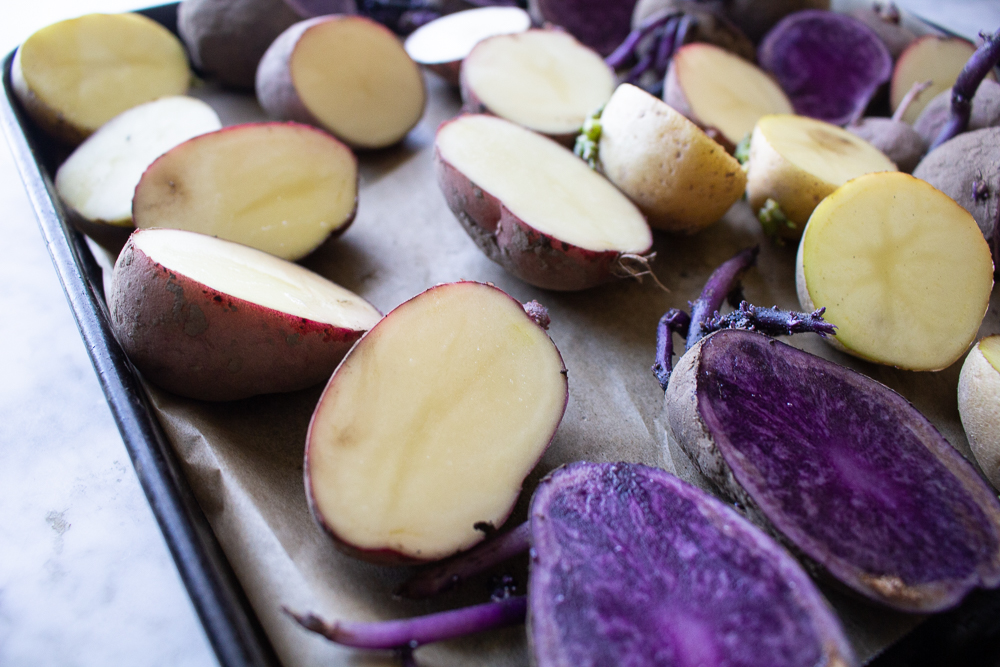
A Note On Sweet Potatoes
Sweet potatoes and potatoes are totally different and do not grow the same way. Sweet potatoes grow “slips” or actual green plants that grow from their eyes. Those greens then get twisted off and placed in a glass of water to grow roots. Once the roots are established, then they are planted in the garden. The result is a long vine of leaves and the roots become your sweet potatoes.
Regular potatoes also have growth from the “eyes”(which are the growing points of the potato, a little indentation or sign on the skin), but it is not a vine. A seed potato is just one that has sprouted into little roots (see below). You can make multiple seed potatoes by cutting a slice off the main tuber, making sure each cut has at least 2 sprouting eyes.
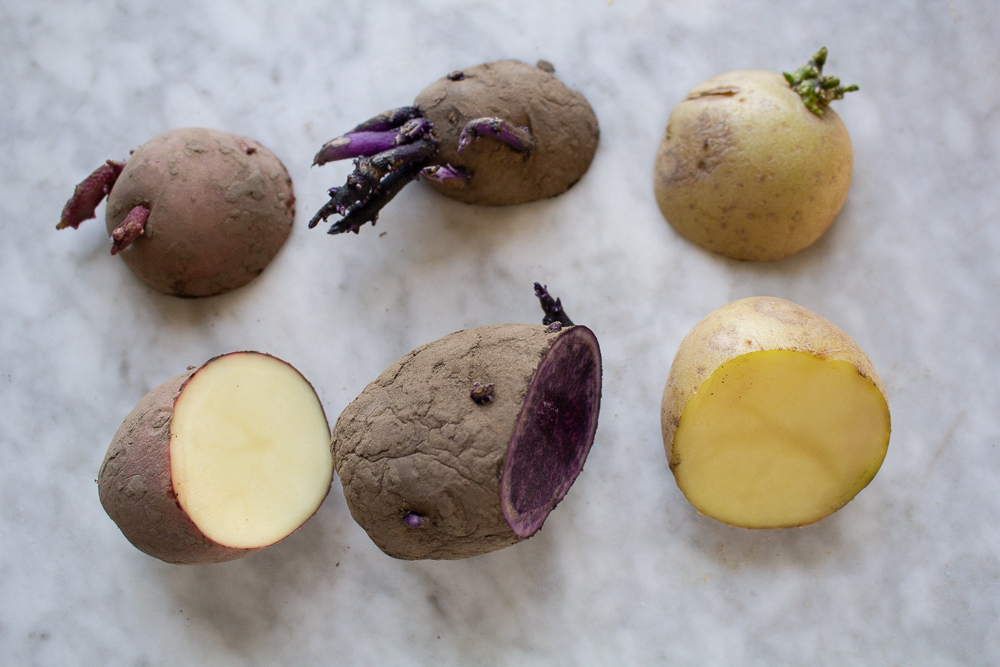
When To Plant
Some people mention planting potatoes about 3-4 weeks prior to your last frost. To get your last frost date based on your region, go here. While these suggestions aren’t true and hard dates, they are a good estimate.
I don’t particularly follow the rule about 3-4 weeks before last frost. I’ve had success planting them anytime in spring, so I’ll just go with that. You can also stagger plant. Find out how many days your particular type of potato needs to grow, count back from your last frost, and plant. Stagger planting yields to multiple crops, so you can enjoy potatoes all summer, fall and winter (they store well).
How To Grow Potatoes Instructions
- First, either buy some potato seeds (which are basically potatoes with “eyes” that have started to grow) or simply leave a few potatoes in your pantry a few weeks too long like I do.
- Next, cut the potatoes so that you have at least 2 eyes on a piece.
- Leave those pieces out on the counter to dry and develop a type of “skin” (or dryness on the cut) for about 2 days. This skin/film keeps the potatoes from rotting when placed in the ground.
- When the soil is warm enough to plant, dig a hole about 6 inches deep and place the piece of potato with eyes up. Cover with soil.
- I space them about 1-2 feet apart, but some people do 3. Also, if you’re harvesting new potatoes (early potatoes) you can plant them closer together.

How To Grow Potatoes in A Bucket Or Burlap Bag
One other way to grow potatoes is in a bucket or bag. The benefit to this is that you can more easily find the potatoes when you overturn the bucket or bag, and there won’t be any stragglers left behind. Just be sure to poke holes in the bucket and have the bag be porous (like burlap) to allow water to escape. Extra water will add too much unwanted moisture and may rot the potatoes. Continue with the steps mentioned below.
When to Harvest Potatoes
- The plant itself will grow and grow, left unattended (if in a bag, water sometimes and don’t let it dry out). Some people recommend adding more soil on top as it grows, creating mounds, since the potatoes actually grow from the stem. If the stem is covered with dirt, it signals the plant to grow potatoes from the stem. Some people just let them be and see what happens. I’ve done it both ways (with a mound of dirt on top and just left alone) and I didn’t see much of a difference. But most likely this year, just to be safe, I will add more dirt on top.
- Late summer, the plant will turn yellow and start to wilt. Once the plant has died, the potatoes are ready to be harvested.
- Simply use a pitchfork to loosen the soil, gently, and dig up the potatoes.
- Lastly, any potatoes that have been “forgotten” in the soil (I’ve done that, especially if they’re deep and small), will become potatoes next year. It’s sort of fun to see the plants growing on their own simply because I didn’t get them all.
Interested in More Gardening Posts?
Check out our whole library of Gardening Posts!

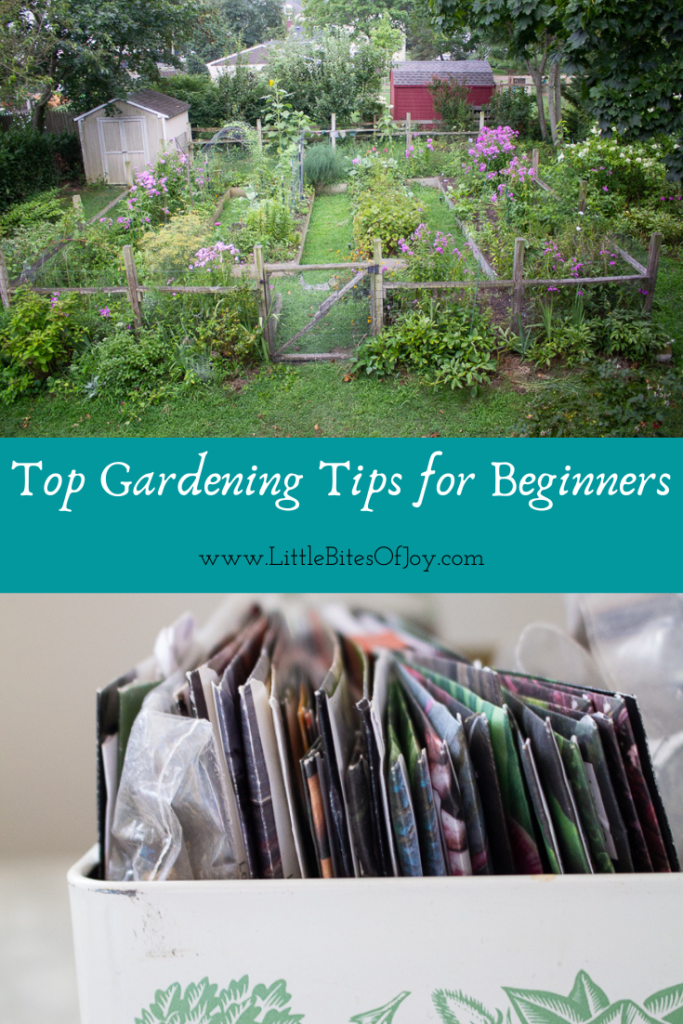






Leave a Reply